 Geddie Photo Album
Geddie Photo Album


|
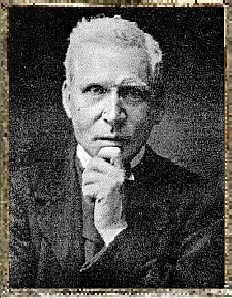
'Honest John' Geddie
by
Neil Macara Brown
|
Mention of the journalist John [Douglas] Geddie moves few
today, but earlier in the [20th] century he was
a major force both in his profession and the social
and literary life of the Capital. Although the style
of this Moray man's 'gems;
about his adopted city
and his other love, Fife, is now somewhat archaic,
their contents — crammed with anecdote and
architecture — remain evergreen. Indeed, many, like
me, must have made their first antiquarian
explorations in and around Edinburgh, especially
along the Water of Leith,
after having read his
beguiling works. His Fringes recorded Edinburgh's
outskirts in 1920,
as Chambers’ Traditions had its Old
Town a century before.
My interest in
John
Geddie derives from his warm friendship with my
aunt, Janet Cameron Brown; she worked in the Counting House at North Bridge when he was Senior
Assistant Editor of The Scotsman. As already
elaborated in one of my series of articles about
Stevenson’s books (‘Ex Libris RLS: Much
Travelled Books'), Geddie gave her the two volumes of the
journal of Sir Walter Scott (1890), which had come
from RLS’s library at Vailima. Among her other
treasures were signed copies of the first editions of
Fringes of Fife (1894) and
Fringes of Edinburgh
(1920); these are inscribed “With love from...”
and “Always Yours, John Geddie.” His signature,
with that of the sculptor, Henry Snall Gamley,
also appears in fun as a 'witness'
on a presentation copy of Joseph Laing Waugh's
Robbie Doo given to her
in 1927. I was l lucky enough to find the twin of
this, given the same day to her friend, Bessie McKinlay, in MacNaughtan’s Bookshop,
Edinburgh.
Auntie Jenny’s photograph album holds joyous
'box-Brownies' of
herself and John Geddie accompanied by family and
friends, mainly from The Scotsman, on trips during
the 1920s.
There are jaunts around the Lothians to places such
as Dundas
Castle and Saltoun
Hall, and forays into
Fife, as well happy hill
walks in the Moorfoot
and
Pentland Hills. Her autograph book, dating from
1912, has a page signed JDG on 15 July that year
pasted in which reads:
|
Rich gifts that heaven
delights to see
The poorest hands may hold.
The
love that of its poverty
Gives kindly succour, prompt and free,
Is worth its weight in gold. |
Another Geddie gem, found at the end of one of
Scott’s Journals, was an original sepia copy of the
shot of RLS and his family, with their household
myrmidons, on the porch at Vailima. On the back,
on 1 January 1905, J. R. Patrick has written: “My
dear
Geddie, Good luck, good cheer, and many a glad new
year to you and yours. When are we going to have a
walk again?" John Patrick, the noted
photographer who illustrated John Geddie's
Romantic Edinburgh (1905),
secured the
British publication
rights for pictures of RLS taken by John Davis,
postmaster, Apia.
The manuscript of
Romantic Edinburgh, consisting of 232 slim,
octavo-sized,
loose leaves preserved in one of 'Stone's
Universal
Portfolios' by Augustus Muir, fell my way some years
ago. The text differs little from the published work
and the few alterations are unlikely to levitate
the literary historian.
Geddie's copy of Cockburn's Memorials of His Time
(1856) contains marginalia
possibly made when Romantic Edinburgh was
written. But the only annotation lies alongside
'Cocky's
quotation of the blasphemous remark -
“Muckle he made o’ that, he was hanget' — made
by Lord Braxfield about the Saviour: “It is in a
notice of these memoirs in the Law Review, ascribed
to Lord Brougham, that the author has often
sacrificed truth to make a good story, & this
anecdote of Braxfield is given as an example there
being no foundation whatsoever for the story.”
A
‘Moray loon’, John Douglas Geddie was born at
Garmouth,
on the Spey, on 8 December 1848 and died
in Edinburgh on 20 January 1937. The son of James
Geddie. a shipbuilder, and Margaret
(nėe) Spence,
he married Isabella Cecilia Young and had three sons
and three daughters. His interests were golf,
cycling and, especially walking. He was a prime
mover in the establishment of the Braid
Hills Public
Golf Course and the Edinburgh Evening Dispatch
Trophy there in 1888. His home was at 16 Anne
Street, Stockbridge, before he moved to 'The
Hillock’, Liberton
Drive, in 1928.
Geddie was
educated at Garmouth Free Church School and at
Milne’s Institution, Fochabers. He originally served
as a clerk in law
offices in Elgin and Edinburgh
from 1864 to 1870. While with a George Street firm
he attended law classes at the University, where, as
he describes in Rosaline Masson’s I Can Remember
Robert Louis Stevenson, he encountered RLS on the
few occasions he graced the conveyancing
class. Geddie also says that although he often visited on
business the firm of W. F.
Skene W.S. in Thistle
Street, where RLS served his “brief and perfunctory
apprenticeship”, he could not recall having seen him
there. In fact, JDG joined The Scotsman as a
sub-editor in 1870, two years before RLS became
Skene’s 'idle
apprentice'. His regard for RLS,
however, made him re-title his masterful Water of
Leith from Source
to Sea (1896) as The Home
Country of Robert Louis Stevenson for its second
edition in 1898. In it he says RLS “loved, in spite
of its stains, the stream by the side of which he
was born, with a pathetic love which sometimes was
almost bitter in its intensity. Its channel was
carved deep in his memory; the sound of its current
mingled in the exile’s thoughts of home.”
Geddie
became leader-writer for the Edinburgh Evening Dispatch from 1886 to 1889, before rejoining
The
Scotsman as assistant editor and leader writer —
posts which he retained until his retiral
from more
active newspaper service forty years later in 1929. The editorial reins were briefly assumed jointly by
Geddie and his fellow senior assistant editor,
William Riach,
early this century
when the then editor, Dr
Charles Cooper, towards the end of his tenure,
loosened his daily hold of the paper by basing
himself in Bournemouth. “Geddie was the
senior of the two, and a
delightful and
accomplished writer, but he lacked the force and
executive capacity of Riach”, claims The Glorious
Privilege: The History
of The Scotsman (1967). This
dual arrangement resulted in some doubt as to where
ultimate control of the newspaper lay, but Riach was
appointed Deputy Editor c.1904.
At this time Geddie
is credited with coining the term 'wee free' in
reference to the remnant of the Free Church of
Scotland. In a leader he jibed: “It is hard to
see how the poor wee Free Church, which has just
come into so overwhelming an inheritance, is to free
itself;
even if it wished, from the fortune which the law
has hung about its neck.”
Remarkably, Modern Scottish Literature: A Popular
Guide-book Catalogue (1933) says that Geddie was still reviewing at the
age of 84: “His work in journalism, literature,
travel, archaeology, biography, Scottish history,
topography and kindred subjects, has marked him out
as one of the ablest and most encyclopaedic
of
Scottish journalists. He has written on nearly every
country under the sun, and has contributed numerous
articles (including stories) to magazines and to
periodicals. A great traveller, he has footed it
over every part of Scotland, many parts of England
and Ireland,
and bits of the Continent. During his
long career he has been a commentator on a score of
wars, big and little, and on many
general
elections. Mr Geddie’s intellectual energies have overflowed into numerous books.”
Certainly Geddie
was a prodigious walker. He climbed Arthur's
Seat every Sabbath before going to kirk, according
to
the poet and painter, Charles Richard Cammell, in
his Heart of Scotland (1956). He also often led
parties of ladies to that height from the Sheep's
Heid
Inn at Duddingston, it seems. Dapperly
dressed in his Sunday-best
stiff collar and bowler hat, Geddie might well be
the ‘old devil’ depicted breaking open the ‘bubbly’
for a bunch of ladies in long dresses and floral
hats on an Edwardian
postcard of the hilltop.
Hills of greater difficulty
were also ascended by Geddie. His
'Thunderstorm
on
the Cuillin’ - experienced at seventy-five years of
age — is collected in A Cadger's Creel: The
Book
of the Robert Louis Stevenson Club Bazaar (1925):
“Luck... had brought me, in a week, from the summit
of the Merrick, in Grey Galloway, to the foot of Scuir nan Gillean, in
Skye. Like the 'pleasant gauger', I had
'walked with willing foot',
and with rucksack on shoulder,
by no other rule than the delectable one laid down by RLS for the
solitary wayfarer - in the
mood and habit of one
who ‘may change his mind at every finger-post,
and, where ways meet, follow vague preferences
freely, and
go the low road or the high, choose the shadow or
the sun-shine’.”
Descending Bruach na Frithe saw him perform
"somersaults
over the stones
in the direction of the corrie below"!
Cammell
encountered Geddie at the Rymour Club in the 1920s,
when it met in the Outlook Tower where Cammell lived
at the time. “Geddie was a man of outstanding
personality”, he maintains: “Near to eighty years of
age, his vigour seemed little abated. He wore
no overcoat in the bitter east winds of an Edinburgh
winter... He was a permanent power in the office of
The Scotsman,
a kind of advisory assistant editor, invaluable from
his long experience. More than all, he was a scholar
of eminence, the chief living authority on the
history and archaeology of old Edinburgh, upon which
he had written books that are classics.” He
recalls Geddie being clear-cut, clean-shaven, with a
ruddy weather-beaten complexion and thick white
hair; and fondly remembers his home-spun
jacket and expressive gestures.
The epithet,
‘Honest’, likens Geddie to `Honest Allan, Ramsay,
the 18th-century poet who rescued much of Scots
minstrelsy from obscurity in The
Evergreen and The Tea-Table
Miscellany. His mantle had fallen on Geddie,
said Dr John W. Oliver, at the Rymour Club ‘wake'
held in the Outlook Tower in 1938;
The Scotsman reported that 'Honest John’,
“when the tide of of Scots literature had reached
its flood in the period of Burns and Scott and was
definitely receding, had in much the same way as
`Honest Allan’, but in more difficult circumstances,
done a great deal to revive the interest of his
townspeople in the old lore and customs of the countryside.
The author of
The Balladists
(1896) in the
'Famous
Scots Series’ — “One of the most delightful and
eloquent appreciations of the ballad literature of
Scotland that has ever seen the light,”
according to New Age --
Geddie initiated the Rymour Club, devoted to
collecting ballads and folk-lore, in 1903. (He was
also in
the similar but shortˇlived Dunedin Association.)
A member of the Old Edinburgh Club from its
inception in 1908, Geddie ranks high alongside its
all-time greats -- men like William Cowan
whose collection formed the nucleus of the
`Edinburgh Room'; and Bruce Home, whose 'Provisional
List of Old Houses...’ initiated the first volume of
The Book
of the Old Edinburgh Club
(1908), which also includes the first of Geddie’s
own major illustrated series on the ‘Sculptured
Stones of Old Edinburgh'. The 'highly
clubbable’ Geddie enjoyed himself best, however, as
'Bard’ of the Trotters Club which haunted the
skittle alley of the Sheep’s Heid
Inn. The Book of
the Trotters Club was given to my aunt by him; my
copy of Volume II belonged to R. D. Glover, his old
friend.
Excepting the first four items listed below, John
Geddie`s books are fairly easy fo find. But has
anyone ever seen Round Fife with a Golf Cleek
(c. 1890), which is mentioned in the Foreword to
The Fringes of Fife?
Books by John Geddie
|
Lake Regions
of Central Africa: A Record of
Discovery. Nelson, 1881.
Beyond the Himalayas: A Story of Adventure.
Nelson, 1882.
The Russian Empire: Historical and Descriptive.
Nelson, 1882.
The Fringes of Fife. Illustrated by Louis
Weirtet. David Douglas, 1894.
The Balladists. ‘Famous Scots Series’. Oliphant
Anderson &
Ferrier, 1896.
The Water of Leith from Source to Sea.
Illustrated by Joseph Brown.
W. H.
White, 1896. Reprinted as The Home
Country of Robert Louis
Stevenson, 1898.
Romantic Edinburgh. Illustrated by John Patrick.
Sands, (1900).
Edinburgh in Pictures.
illustrated by John Patrick. Sands,
[1903).ˇ
The Heart of Edinburgh. Illustrated by Philip B.
Whelpley.
Sands, (1913).
Thomas the Rymour and his Rhymes. 250 paper
copies only.
Rymour Club, 1920.
The Fringes of Edinburgh. Illustrated by Arthur
Wall. Chambers, 1926.
The Fringes of Fife: New and enlarged edition.
Illustrated by Arthur
Wall & Louis Weirter. Chambers, 1927.
Edinburgh; The Shores of Fife; The
Scott Country. Illustrated by
E. W Hazelhurst, issued separately by
Blackie in 1922. In 1933,
the three were combined with The
Trossachs
by George Eyre Todd in
one volume, Edinburgh, the Borders
and the Trossachs, and as
Beautiful
Scotland in 1938.
Morayshire Characters, ed. for the London
Morayshire Club, 1931.
|
--
Article courtesy
of
its author Neil Macara Brown,
as originally
published in Scottish Book Collector
magazine - Autumn, 1997
|
|

Return to Main Page

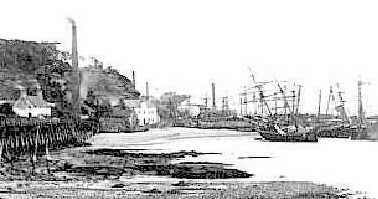
|
GEDDIE'S LOST ON THE
"SWIFT"
INQUIRY AT ABERDEEN
[Excerpt from the Banffshire
Journal, January 28, 1896]
"Yesterday, before
Sheriff Brown and a Jury in the Aberdeen Sheriff
Court, under the Fatal Accidents Inquiry
(Scotland) Act, 1895, an Inquiry was held in
regard to the deaths of ... Marshall Geddie,
seaman, Banff ... [crew] of the ill-fated
schooner 'Swift' of Banff, which was lost at
Scotston Head, near Peterhead, on Wednesday, 15th
instant, while on a voyage from Banff to Leith
with a cargo of grain. The 'Swift' belonged to
Messrs Wm. Geddie & Son, lately shipbuilders
at Banff Harbour... There was also lost by the
sinking of the ship Alexander Geddie, ship
carpenter, brother of the seaman Marshall Geddie
and son of the owner... The first witness called
was John Geddie (38), ship carpenter, Banff,
brother of two of the deceased, and son of the
owner... William Guy, coastguard officer at
Rattray Head, testified, 'A heavy squall of snow
came on. The vessel was in the midst of the
snowstorm, and during that time the men furled
the topsail. I saw the men through a glass. The
vessel, when the snowstorm cleared away, was
close to Rattray Briggs and inside the buoy,
being rather dangerously near the shore. She
cleared Rattray Briggs, and, hugging the land,
continued in that way until within two miles of
Scotston Head, the tide being half-ebb or quarter-ebb,
setting the ship in towards the bay. When within two
miles of Scotston Head, the
vessel's head was out to sea, making a fair wind,
and after being on that course for about four
minutes, her head came round to starboard, facing
the rock. I summoned the Life-Saving Apparatus
Company, and during the time I had, left with the
rocket party. I went to the scene of the wreck
and attempted to communicate with the ship by
rocket, but could not, the distance being too
great. I then sent a man to summon the lifeboat.
When the ship struck, the exact time, as I noted
it, was as near as possible four o'clock. I saw
no appearance of any one on board when she struck
or afterwards. The two seas which struck her
after she grounded were sufficient to sweep off
the crew, and no man could ever have lived under
them....' [It was found the crewmen] 'had been
drowned...off the coast of Aberdeenshire in a
gale of great severity' ... The case lasted for
little over an hour."
[Article courtesy Dorothy Geddie,
Edinburgh. Photo of Wemyss Harbour, Fife] |

East
Texas Geddie's

Geddie
Reunion 1998
Van Community Center -
VanZandt County, Texas

Early Geddie's of Colfax,
Texas
[Photos
from COLFAX, by Henry
L. (Jack) Geddie]

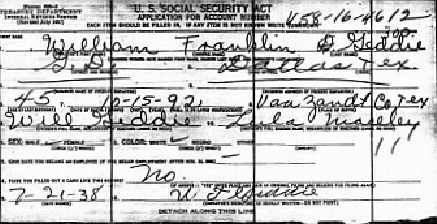
WILLIAM FRANKLIN GEDDIE
Son of WILL and LULA MOSELEY GEDDIE
U.S. Social Security Application 1938
Born Oct. 15, 1892 in Van Zandt County, Texas

GEDDIE'S MOVE ON TO WEST TEXAS
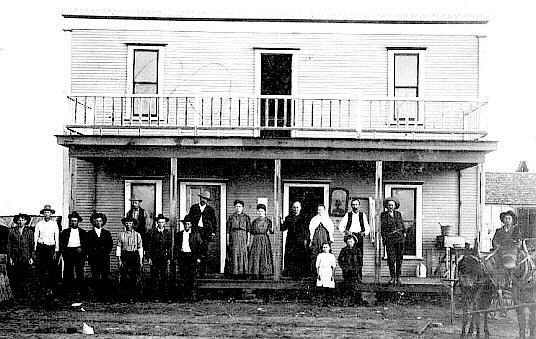
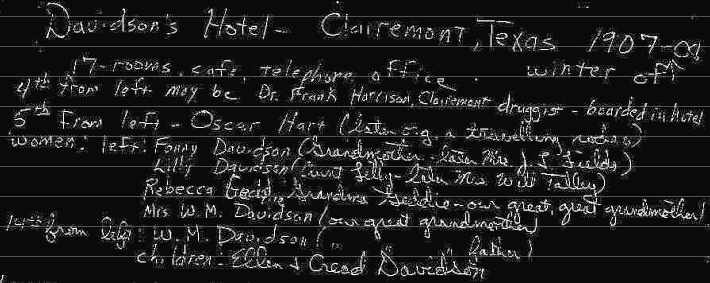
GEDDIE'S AND
DAVIDSON'S OF SCURRY COUNTY, TEXAS
PHOTO
OF DAVIDSON'S HOTEL IN CLAIREMONT (WEST TEXAS) c.
1907
[Photo and Description courtesy of
Dr. Thomas R. Hargrove, Galveston Texas]

EARLY GEDDIE'S IN FLORIDA
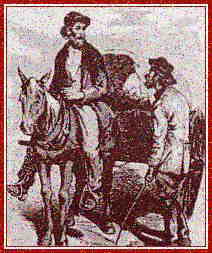
At some point
before 1810, the family of Alexander
Geddie (b.1792), son of James Daniel and
Catherine Isabella McPhail Geddie, moved
south from North Carolina to Florida.
Alexander, whose first wife had died,
arrived with four sons and a daughter
according to Jack Geddie's research.
Alexander would soon move on to
Mississippi. It is likely that one or
more of his sons remained and that they
or their descendants became
well-established in the Tallahassee area.
It is documented that his son, also
Alexander Geddie, fought in two Indian
Wars including the Seminole War and later
served in the Civil War. Although much
more is to be learned of Geddie family
history in Florida, we know that Joseph
B. Geddie enlisted in the Army of the
Confederacy as a Private with the 3rd
Arkansas Infantry in Hamburg, Arkansas on
April 8, 1862, and that he was paroled at
Appomattox, Virginia April 12, 1865.
Joseph was born in Florida c.1830, and
filed Florida Pension application #A11659
from Leon County in 1899. In 1860 Joseph
and his wife Elizabeth had been listed as
residents of Ashley County. Joseph's
occupation was given as farmer.


Joseph B. Geddie Florida CSA Widow's Pension
Application for Elizabeth Geddie, 1904

|
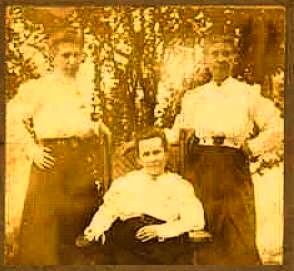
Ella Rich Geddie (center) and
Sisters
THE RICH SISTERS OF NORTH CAROLINA
SETTLE IN BLANTON, FLORIDA
THE GEDDIE -
RICH - CULBREATH - BLOCKER - O'BERRY
CONNECTION
At left in photo is Ida
(nee Rich), with Ella Rich Geddie in the
middle and Mary Elizabeth Rich Blocker at
right. The photo was probably taken in
Blanton, Florida. The migrations were
sometimes slow to Florida from North
Carolina. John Marion O'Berry (coming
from Screven County, Georgia) met Francis
and Mary Rich Blocker with their horse
and wagon where the train ended in
Wildwood (Fla.) when the O'Berry's moved
to Blanton. It is believed there
was either a family or former neighbors
connection between the Blockers and
O'Berry's.
J.
McPhail Geddie had married Ella Rich,
daughter of Lewis H. and Harriet Rich of
Boykin Bridge (near Clinton), Sampson Co.
NC at some point in the mid-19th
century. Mary Elizabeth Rich, who had
come along to Cumberland County from
Sampson Co., was Ella's sister and
eventually married Francis Blocker of
Cumberland Co. Francis was the youngest
son of John Culbreath and Julia Braddy
Blocker. John Culbreath Blocker (b.
10/28/1811 Sampson Co. NC) is believed,
from circumstantial evidence, to be the
son of William and Jean Davis Blocker of
the Sampson Co. area. John proclaimed
himself raised an orphan and nothing is
known of his first twenty-nine
years. He surfaced in Cumberland
Co. in 1831 and married Julia Braddy of
Tarboro NC in 1839. William Blocker
disappears from the census after 1790.
(Photo and
family descriptions courtesy Lora
Blocker, Blanton Florida)
|

|
Today both Geddie Road and
Geddie Cemetery lie just southwest
of Tallahassee, Florida's state capital, near the
Gulf of Mexico.
GEDDIE CEMETERY NEAR TALLAHASSEE
At the end of a sandy trail
approximately a quarter mile from Geddie Road
off U.S. 90 just West of Tallahassee, and visible
from the road through a
wrought-iron fence, the beautifully maintained
Geddie Cemetery lies within
an area that is a now a State Forest Preserve.
The cemetery is the final
resting place for several families including
Geddie's. |
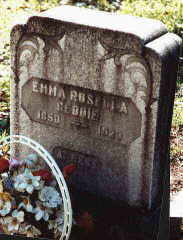
Headstone of Emma Russela Geddie
1850 - 1939
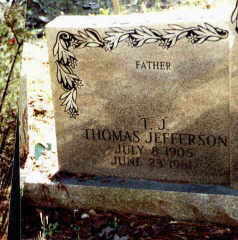
Headstone
of Thomas Jefferson Geddie
1905-1964
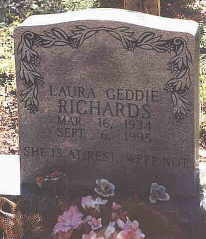
Headstone
of Laura Geddie Richards
1934
- 1995

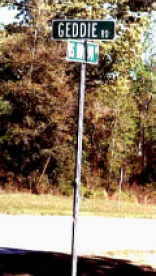
Geddie
Road runs between Rts. 90 & 20 and is about 2
mi. long
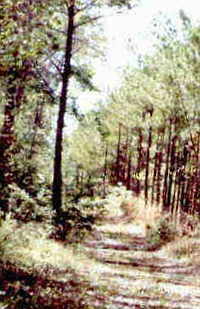
Forest trail once owned by Geddie's beside Geddie Road
and near the Cemetery

|
GEDDIE-McPHAIL
NORTH CAROLINA LEGAL NOTICE 1863
"LEGAL
NOTICE, from Cumberland County Court of Pleas and
Quarter Sessions, Sept. Term 1863: Petitions for
sale of land and of slaves -- Dugald McPHAIL,
John McPHAIL, Daniel McPHAIL, and Agnes GEDDIE
heirs at law of Robert McPHAIL VS Thomas McPHAIL,
James GEDDIE and wife Margaret, James Dobbin
McPHAIL and Virginia Caroline McPHAIL minor heirs
of Archibald McPHAIL, and Mary Isabella and Nancy
Jane McPHAIL minor heirs of William
McPHAIL." |

|
JOHN
GEDDIE APPOINTED IN NC
From the
"Laws of North Carolina 1783"
"At a general
assembly begun and held at Hillsborough, on the
18 day of April, in the year of our Lord, one
thousand seven hundred and eighty three, and in
the seventh year of the independence of the
United States of America, being the first session
of this Assembly. Alexander Martin, Esq.,
Governor.
Chapter
1.
1.Whereas the
necessity for money for the purposes aforesaid,
is indispensable; Be it enacted by the General
Assembly of the State of North Carolina, and it
is hereby enacted by the authority of the same,
That one hundred thousand pounds be emitted in
paper bills of credit... that the same be printed
in a printing press, and that John Geddie and
James Gillispie be appointed commissioners to
superintend the press and number the
bills..."
[NC
Geddie Family Research courtesy Jean Coleman, Lenior NC]
NB-This
"John Geddie" is currently unknown and
could alter the traditional U.S. Geddie history.
It is possible John is James Daniel's brother or
actually refers to a John Geddy, Gaddy, Getty, or
Gaddis. A child of James Daniel and Catherine
Isabella Geddie would have been no more than
eleven in 1783. There is also no evidence that James
Daniel was involved in government or printing. Any further
information on this John Geddie would be welcomed.
|


Next Album Page

|